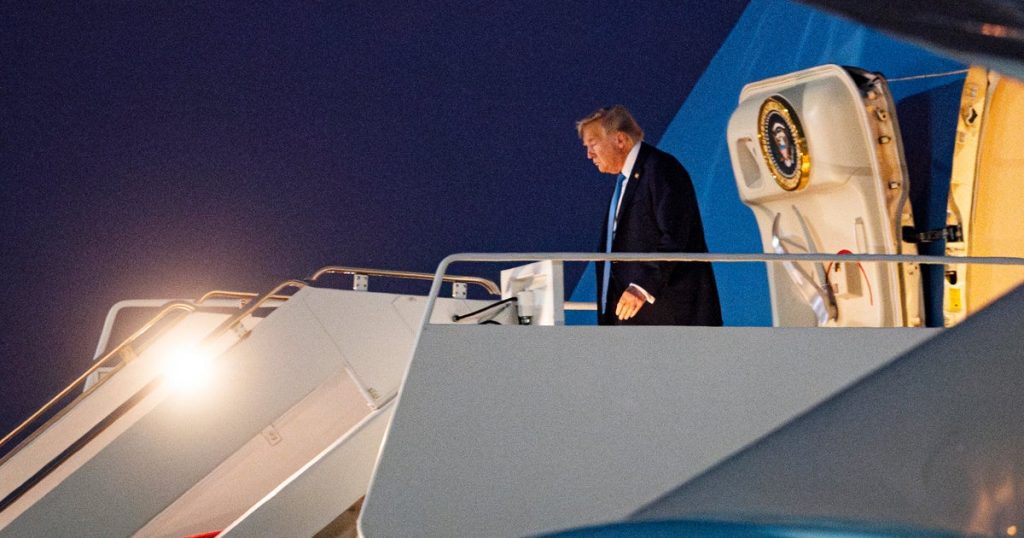In a significant escalation of tensions between the United States and Iran, President Donald Trump asserted via social media that the U.S. now possesses “complete and total control of the skies over Iran.” This declaration diverges from previous U.S. statements regarding Israel’s operations in the region, which have claimed no American involvement. The recent remarks have sparked a flurry of inquiries regarding their implications, particularly related to the U.S. and Israel’s military strategies against Iranian threats.
| Article Subheadings |
|---|
| 1) President’s Bold Declaration |
| 2) Clarification Requested |
| 3) Strategic Military Discussions |
| 4) Regional Implications |
| 5) The Path Forward |
President’s Bold Declaration
On Tuesday, President Trump took to social media, proclaiming that the United States has achieved “complete and total control of the skies over Iran.” This bold assertion seems to indicate a shift in U.S. involvement in the ongoing conflict, particularly given that earlier statements emphasized that Israel’s military operations against Iranian targets were being conducted independently. Trump elaborated that while Iran has advanced defensive systems, they are no match for U.S.-developed military technology. He stated,
“Nobody does it better than the good ol’ USA.”
This statement has not only raised eyebrows regarding the nature of U.S. support for Israel but also about Trump’s broader strategy for the Middle East region.
Clarification Requested
In light of Trump’s statements, numerous officials and reporters have sought clarification from the White House concerning what he meant by claiming control of Iranian airspace. The President’s comments have provoked inquiries about the potential implications for U.S. military involvement in the region and whether this signals a willingness to escalate operations against Iran. “What does control mean in this context?” has been a central question, as the administration has previously maintained that U.S. forces are not actively involved in the conflict.
Strategic Military Discussions
Amid these developments, President Trump convened a meeting with national security advisors in the Situation Room at the White House to discuss the ongoing conflict between Israel and Iran. Reports suggest that the President is contemplating a more direct involvement in military operations against Iranian nuclear sites, with discussions centered around specific targets like the Fordo facility. However, it is noted that there is not unanimous agreement among Trump’s advisors regarding this course of action. The situation is further complicated by diverging opinions on how to address Iranian counterstrikes, posing critical questions about the U.S. military’s role in the increasingly tense standoff.
Regional Implications
The escalating rhetoric and potential military actions carry significant implications for regional stability. While Israeli Prime Minister Benjamin Netanyahu has not ruled out targeting Iranian leadership, he remains cautious about actions that could provoke a broader conflict. In a recent interview, Netanyahu stated that Israel is “doing what we need to do” to secure its interests without elaborating on specific military strategies. Moreover, Vice President JD Vance has indicated that the administration is sensitive to the public’s concerns about foreign entanglements, especially given the contentious history of U.S. involvement in Middle Eastern conflicts.
The Path Forward
As tensions mount, the administration faces critical decisions regarding its approach to Iran. The issue of uranium enrichment is a significant point of concern, as Iran continues to produce uranium at levels that far exceed acceptable thresholds for civilian use, prompting fears of nuclear capabilities. The recent statements by officials reflect a potential pivot towards a military solution aimed at halting these activities. However, there remains considerable debate about the efficacy of military engagement versus diplomatic solutions. The balance struck in the coming weeks will be pivotal in determining the trajectory of U.S.-Iran relations and the broader geopolitical landscape in the Middle East.
| No. | Key Points |
|---|---|
| 1 | President Trump claims the U.S. now controls the skies over Iran. |
| 2 | Clarification on the president’s statements has been requested from the White House. |
| 3 | A meeting was held to discuss potential military actions against Iranian nuclear sites. |
| 4 | The implications of U.S. military involvement in Iran are under scrutiny. |
| 5 | Diplomatic versus military solutions to the Iranian nuclear issue is a point of contention. |
Summary
The recent statements from President Trump concerning U.S. control over Iranian airspace mark a dramatic shift in the narrative surrounding the U.S. involvement in the Israel-Iran conflict. As discussions unfold among U.S. officials regarding military strategies and potential actions against Iran’s nuclear facilities, all eyes are on how these developments might affect regional dynamics and future U.S. foreign policy. The challenges and risks associated with military engagement weigh heavily as the administration contemplates its next steps amidst rising tensions.
Frequently Asked Questions
Question: What prompted President Trump’s declaration about U.S. control over Iran?
The declaration came in the context of ongoing Israeli military operations against Iranian targets, with Trump asserting the superiority of U.S. military technology in comparison to Iranian defenses.
Question: What military actions are being considered by the U.S.?
The U.S. is contemplating potential military strikes against Iranian nuclear sites, with specific discussions around the Fordo facility occurring in high-level meetings.
Question: How have other officials responded to Trump’s comments about Iran?
Various officials, including Vice President JD Vance, have expressed concerns about foreign entanglements while indicating that decisive actions may be taken to curb Iran’s uranium enrichment activities.


